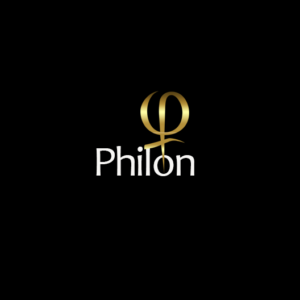What is PhiIon?

PhiIon Treatment is a non-invasive, minimally invasive cosmetic method based on plasma technology. This treatment is used to tighten and lift excess skin, smooth fine lines and wrinkles, and achieve a more youthful appearance. The PhiIon technique uses the ionization of gases in the air to generate plasma, which is applied to the skin to create tiny “wounds” that stimulate the natural healing process. This results in skin tightening and rejuvenation without the need for surgery.
Areas of Application:
- Tightening of sagging skin (e.g., on the eyelids)
- Treatment of wrinkles (e.g., around the mouth, eye area, forehead)
- Improving the appearance of scars and stretch marks
- Skin rejuvenation and lifting effect
The PhiIon treatment is ideal for patients looking for a gentle alternative to surgical procedures to tighten and revitalize the skin.
PhiIon Treatment – FAQ
1. What is the PhiIon treatment?
The PhiIon treatment is a non-invasive method for skin tightening and wrinkle reduction based on plasma technology. Plasma is used to create tiny “wounds” on the skin’s surface, stimulating the body to produce new, firm skin tissue.
2. Which areas of the face and body can be treated?
PhiIon is most commonly used on the face to treat sagging eyelids, crow’s feet, forehead lines, and lip wrinkles. Other areas such as the neck, hands, and areas with scars or stretch marks can also be treated.
3. How does the PhiIon treatment work?
The PhiIon treatment uses a special device that generates plasma energy. This energy is applied to the skin to evaporate the top layer and create tiny points. This leads to skin tightening and renewal as the healing process promotes collagen and elastin production.
4. Is the PhiIon treatment painful?
A numbing cream is applied before the treatment to make the process as comfortable as possible. Some patients experience slight warmth and tingling during the procedure, but it is generally well tolerated.
5. How long is the healing process?
After the PhiIon treatment, small scabs may form, which fall off within 5–10 days. During this time, the skin should not be manipulated or scabs removed to ensure optimal results. Mild redness and swelling may persist for a few days.
6. How long do the results of the PhiIon treatment last?
The results of the PhiIon treatment can last several years, depending on factors such as individual skin type, lifestyle, and aftercare. The skin remains tightened and youthful, although the natural aging process continues.
7. How often should the PhiIon treatment be performed?
In most cases, one treatment is sufficient to achieve visible results. However, depending on the condition of the skin and the desired outcome, multiple sessions may be necessary. Your practitioner will provide personalized recommendations.
8. Are there any side effects?
Mild side effects such as redness, swelling, and scab formation are normal after the PhiIon treatment. These typically subside within a few days. Proper aftercare, including the use of healing creams and avoiding direct sun exposure, is important to minimize unwanted side effects.
9. What should I consider after the treatment?
After the treatment, avoid manipulating or rubbing the treated areas and protect the skin from the sun. Your practitioner will provide specific instructions on post-care to support the healing process and ensure optimal results.
10. Who is a suitable candidate for the PhiIon treatment?
Individuals with sagging skin, wrinkles, or stretch marks who are looking for a non-invasive solution are good candidates. It is important to have a consultation with a professional to determine if PhiIon is suitable for your skin and goals.
Conditions where PhiIon should not be performed:
- Cancer: Patients with active cancer or undergoing chemotherapy or radiation therapy should not undergo PhiIon treatments, as skin healing may be impaired.
- Blood clotting disorders: Individuals with blood clotting disorders, such as hemophilia, are at higher risk of bleeding and poor healing after treatment.
- Autoimmune diseases: In cases of active autoimmune diseases like lupus or scleroderma, the skin can be extremely sensitive and healing may be impaired.
- Heart conditions with implanted devices: People with pacemakers or other electronic implants should avoid PhiIon treatments due to the electrical aspect of the technology.
- Uncontrolled diabetes: In cases of uncontrolled diabetes, the skin’s ability to heal is significantly reduced, increasing the risk of infections and complications.
- Severe mental disorders: Individuals with severe mental health issues, particularly those under medication, should not undergo aesthetic treatments without medical supervision.
Conditions where PhiIon should only be performed if they are not active:
- Herpes simplex (cold sores): If herpes simplex occurs in the treatment area, the procedure should be postponed until the condition is inactive to prevent the spread of the virus and worsening of symptoms.
- Eczema and dermatitis: Active skin conditions like eczema or dermatitis can complicate the treatment. The procedure should only be performed when the skin is stable and inflammation-free.
- Psoriasis: In cases of psoriasis, the treatment should not be performed if the condition is in an active phase or visible in the treated area.
- Active infections or inflammations: Skin infections, bacterial inflammation, or fungal conditions must be completely healed before the PhiIon treatment.
- Pregnancy and breastfeeding: It is generally recommended not to undergo PhiIon during pregnancy or breastfeeding, as the effects on the fetus or newborn are unclear.
Book Appointment Online
You can easily book an appointment through our online booking system. However, we always recommend sending a quick message via WhatsApp or Instagram beforehand.


 +49 17623141510
+49 17623141510  Google Maps
Google Maps